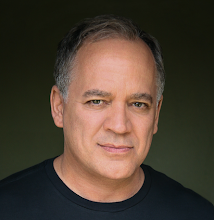I am no criminologist, but I do enjoy math.
Currently in the United States, 1 in every 31 adult persons is either in jail or prison or on parole or probation. That amounts to 7.3 million Americans and a cost that exceeds $68 billion annually. This figure does not include juveniles accountable to the U.S. correction system.It breaks down like this:
1 in every 45 Americans is on parole or probation
1 in every 100 Americans is in jail or prison
1 in every 11 African American adults is in jail or prison
1 in every 27 Hispanic American adults is in jail or prison
1 in every 45 White American adults is in jail or prison
It’s ridiculous and we lead the world. By far.
I will post the full wiki entry about it below. I know, I know, “Wikipedia is often wrong.”
Actually, in this case, upon surfing the internets (We love you George W!), it pretty much turns out to be the same numbers everywhere you look.
What on earth is going on?
We are such a nonintegrated nation. People are so incredibly rich or poor. And so many of the poor end up in jail. I HAVE NO ANSWERS! Except, maybe a total redo? OY with all this liberty!
I just, there are all these people eating artisanal cheese and then you throw everyone else in the pokey?
Very upsetting stuff.
You can’t fight with math. Math is math is math.
This shit feels very military dictatorship to me.
And then, people have such a hard time figuring out where to send their kids to school. I don’t know about you…Less prisons, more schools, maybe?
This upsets my stomach. I have to take a shower.
Read on. Hunker down. Keep your nose clean---you might be the next one behind bars.
Incarceration in the United States is a concurrent power under the Constitution of the United States, which means that prisons are operated under strict authority of both the federal and state governments. Incarceration is one of the main forms of punishment for the commission of felony offenses in the United States.
Less serious offenders, such as those convicted of misdemeanor offenses, may receive a short term sentence to be served in a local city or county jail, or to alternative forms of sanctions such as community corrections (halfway house) or house arrest. Different U.S. prisons operate at different levels of security, ranging from minimum-security prisons -- that mainly house non-violent offenders -- to Supermax facilities that house the more dangerous criminals such as Oklahoma City bomber Terry Nichols and September 11 conspirator Zacarias Moussaoui.
The United States has the highest documented incarceration rate in the world. It also has the highest total documented prison population in the world. As of year-end 2007, a record 7.2 million people were behind bars, on probation, or on parole, with 2.3 million of those actually incarcerated. More than 1 in 100 American adults were incarcerated at the start of 2008. The People's Republic of China ranks second with 1.5 million, while having four times the population, thus having only about 18% of the US incarceration rate.
The federal government, states, counties, and many individual cities have facilities to confine people. Generally, "prison" refers to facilities for holding convicted felons (offenders who commit crimes where the sentence is more than one year). Individuals awaiting trial, being held pending citations for non-custodial offenses, and those convicted of misdemeanors (crimes which carry a sentence of less than one year), are generally held in county jails.
In most states, cities operate small jail facilities, sometimes simply referred to as "lock-ups", used only for very short-term incarceration—can be held for up to 72 business hours or up to five days—until the prisoner comes before a judge for the first time or receives a citation or summons before being released or transferred to a larger jail. Some states have "unified" systems, in which all the jails and prisons are operated by the state. The federal government also operates various "detention centers" in major urban areas or near federal courthouses to hold criminal defendants appearing in federal court.
Many of the smaller county and city jails do not classify prisoners (that is, there is no separation by offense type and other factors). While some of these small facilities operate as "close security" facilities, to prevent prisoner-on-prisoner violence and increase overall security, others may put many prisoners into the same cells without regard to their individual criminal histories. Other local jails are large and have many different security levels. For example, one of the largest jails in the United States is Cook County Jail in Cook County (located in Chicago). This facility has eleven different divisions, including one medical unit and two units for women prisoners, with each of the eleven divisions operating at a different security level, ranging from dormitory-style open housing to super-secure lock-down.
In the state of California, to prevent violence, prisoners are segregated by race, ethnicity, and sexual orientation while held in county jails and in the California Department of Corrections and Rehabilitation's reception centers, where newly committed prisoners are assessed prior to being transferred to their "mainline", long-term institutions.

1 comment:
I think we should only lock up the violent ones. The rest get Methadone or something. I think it's mostly the 'War on Drugs' that is filling up the prisons and for what? People want to kill themselves I say let 'em! Just leave the rest of us out of it. Also, where I live (Baltimore), most of the crime really is committed by minorities. Why that is the case probably points to deeper social issues but if you shoot someone you still have to be locked up.
Post a Comment